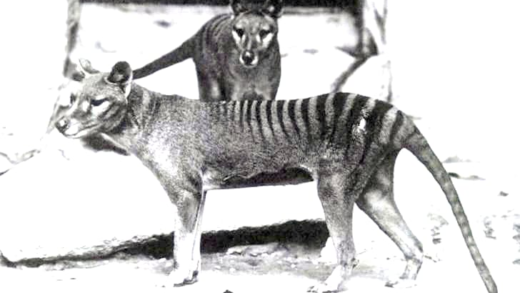Fire rainbows and sun dogs are stunning atmospheric phenomena that enhance our appreciation for nature. Fire rainbows, formed by sunlight refracting through ice crystals, create vibrant colors in the sky. Sun dogs, appearing as bright spots near the sun, result from similar processes. Understanding these phenomena deepens our connection with the environment and encourages exploration of the outdoors.
Fire Rainbows: What Are They?
Fire rainbows, or circumhorizontal arcs, are rare atmospheric phenomena characterized by their vibrant colors. Unlike typical rainbows formed by raindrops, fire rainbows occur when sunlight interacts with ice crystals in cirrus clouds. This unique process creates a spectacular display of colors, often resembling a vibrant arch in the sky.
Characteristics of fire rainbows include:
- Location: They usually appear in high-altitude cirrus clouds.
- Color Spectrum: The colors range from red on the top to violet on the bottom, similar to a rainbow but often more vivid.
- Shape: They often take the form of a horizontal arc rather than a semicircular one.
Understanding fire rainbows enhances our appreciation for nature’s beauty and complexity.
How Fire Rainbows Form
The formation of fire rainbows involves a specific scientific process. When sunlight passes through ice crystals in cirrus clouds, it refracts, or bends, at precise angles. This refraction causes the light to separate into its component colors, creating the stunning spectrum we see.
The essential steps in the formation of fire rainbows are:
- Sunlight enters the ice crystals at angles of 22 degrees.
- The light refracts, bending and splitting into various colors.
- The resulting spectrum displays as a horizontal arc, best viewed when the sun is high in the sky.
To witness a fire rainbow, conditions must be just right, including the presence of cirrus clouds and sunlight positioned correctly. This intricate process showcases the beauty of atmospheric science.
Sun Dogs Explained
Sun dogs, or parhelia, are another fascinating atmospheric phenomenon. They appear as bright spots on either side of the sun, typically when it is low in the sky. Sun dogs are formed in a manner similar to fire rainbows, involving the refraction of sunlight through ice crystals.
Key features of sun dogs include:
- Appearance: Sun dogs usually appear as bright, white or colorful spots next to the sun.
- Conditions: They are most commonly seen when the sun is at a low angle, often during sunrise or sunset.
- Formation: Similar to fire rainbows, sun dogs are created by the refraction of light through hexagonal ice crystals in the atmosphere.
Sun dogs add to the wonder of our skies, serving as a reminder of the intricate interactions between light and ice.
When Can We See Sun Dogs?
Sun dogs can be observed under specific atmospheric conditions. The best time to spot them is during cold weather when ice crystals are prevalent in the atmosphere. Here are the ideal conditions for viewing sun dogs:
- Temperature: Cold, dry air is most favorable for ice crystal formation.
- Sun Position: Sun dogs are best seen when the sun is low in the sky, typically at sunrise or sunset.
- Clear Skies: A clear sky allows for the unobstructed view of the sun and enhances visibility.
Being aware of these conditions can significantly increase your chances of experiencing the beauty of sun dogs in action.
Fire Rainbows vs Regular Rainbows
Fire rainbows, or circumhorizontal arcs, differ significantly from regular rainbows. Understanding these differences can enhance your appreciation for both phenomena. Fire rainbows are formed by sunlight refracting through ice crystals in high-altitude cirrus clouds, while regular rainbows occur when sunlight passes through raindrops. This fundamental difference leads to distinct characteristics.
Here are the primary distinctions:
- Formation Process: Fire rainbows require ice crystals, while regular rainbows depend on liquid water droplets.
- Color Spectrum: Fire rainbows exhibit vibrant, vivid colors, typically in a horizontal arc, contrasting with the semicircular shape of regular rainbows.
- Occurrence: Fire rainbows are rare, needing specific conditions, whereas regular rainbows are more common after rainfall.
Recognizing these differences not only enriches your knowledge but also fosters a deeper connection to the natural world.
Best Conditions for Observing Fire Rainbows
To observe fire rainbows, specific atmospheric conditions must be met. Ideal conditions enhance your chances of witnessing this stunning phenomenon. The following factors are crucial:
- Presence of Cirrus Clouds: Fire rainbows form in cirrus clouds, which are thin and wispy.
- Sun Angle: The sun must be positioned at a high angle, typically 22 degrees or more above the horizon.
- Clear Skies: A clear sky without obstructions allows for optimal visibility of the phenomenon.
Additionally, late spring and summer months tend to provide the best opportunities for spotting fire rainbows, as cirrus clouds are more prevalent during these seasons.
Capturing These Phenomena with Smartphone Cameras
Smartphone cameras can effectively capture the beauty of fire rainbows and sun dogs. Understanding some basic photography techniques can enhance your chances of getting stunning shots. Here are essential tips:
- Use HDR Mode: High Dynamic Range (HDR) can help balance the bright sunlight and the colorful arc.
- Adjust Exposure: Manually adjusting exposure settings can prevent overexposure in bright conditions.
- Stability Matters: Use a tripod or stabilize your phone against a solid surface to avoid shaky images.
Smartphone photography opens up exciting opportunities for capturing unusual atmospheric phenomena. With the right techniques, anyone can document these stunning natural displays.
Unusual Atmospheric Phenomena to Photograph
In addition to fire rainbows and sun dogs, there are several other unusual atmospheric phenomena worth photographing. Exploring these can deepen your appreciation for weather and nature. Some noteworthy phenomena include:
- Brocken Spectre: A shadow cast on clouds, often surrounded by a rainbow halo.
- Light Pillars: Vertical shafts of light appearing above or below the sun, created by ice crystals.
- Fata Morgana: A complex form of superior mirage, creating distorted images of objects on the horizon.
These phenomena not only provide fantastic photography opportunities but also invite us to explore the intricacies of our atmosphere.
Enhancing Our Connection with Nature
Fire rainbows and sun dogs are not just beautiful sights; they deepen our connection with nature. Understanding these phenomena enriches our appreciation for the atmospheric conditions that create such stunning visuals. When we witness a fire rainbow, we’re not just seeing colors; we’re witnessing the interaction of light, ice, and atmosphere in a dance that’s been happening for millions of years.
This knowledge encourages us to engage more with our environment. By recognizing the conditions necessary for these phenomena, we become more aware of our surroundings. We start to notice the clouds, the sunlight, and the weather patterns that contribute to these breathtaking displays. This awareness can inspire us to explore the outdoors more often, fostering a deeper relationship with nature.
Additionally, sharing our experiences with others can create a sense of community. When we discuss the beauty of fire rainbows or sun dogs, we connect with fellow nature enthusiasts, sharing tips on when and where to see these phenomena. This shared enthusiasm enhances our overall appreciation for the wonders of the natural world.
Fun Facts About Fire Rainbows and Sun Dogs
Fire rainbows and sun dogs come with their own set of fascinating trivia that can ignite anyone’s interest:
- Rarity: Fire rainbows are exceptionally rare, only occurring under specific conditions, making them a unique sight.
- Color Order: The colors of fire rainbows follow the same order as regular rainbows, but the intensity and arrangement can vary significantly due to the angle of sunlight.
- Sun Dog Origins: The term “sun dog” comes from the resemblance of these bright spots to dogs following the sun, a fun and whimsical way to describe them.
- Historical Significance: Both fire rainbows and sun dogs have been noted in various cultures throughout history, often seen as omens or messages from the gods.
- Photography Delight: Many photographers seek these phenomena for their unique beauty, often capturing breathtaking images that can inspire others to appreciate nature’s wonders.
These fun facts not only pique curiosity but also invite more people to look up and appreciate the sky.
Conclusion: Embracing Nature’s Wonders
Exploring fire rainbows and sun dogs allows us to embrace the beauty of nature. By understanding how these phenomena form and the conditions required to observe them, we enhance our connection with the environment. The vibrant colors and striking appearances of these atmospheric wonders remind us of the complex interactions occurring around us.
As we seek out opportunities to witness fire rainbows and sun dogs, we cultivate an appreciation for the natural world. Each sighting becomes a moment of joy, a reminder of the beauty that exists in our skies. So, next time you see a glimmer of color around the sun or a rainbow in the clouds, take a moment to appreciate the science and beauty behind it. Nature’s wonders await—go out and explore!





Comments are closed.